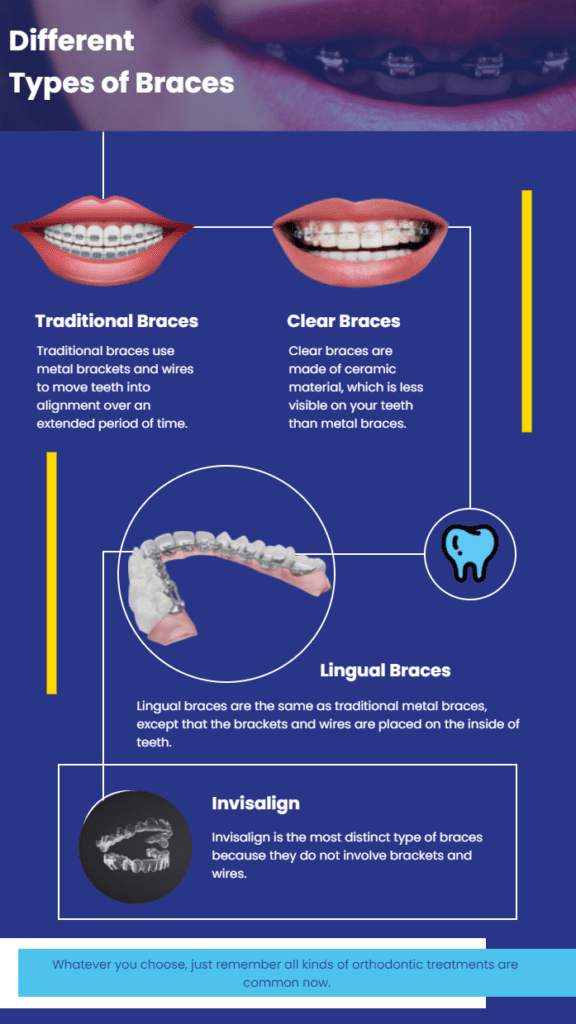The Advantages of Choosing a Cumming Orthodontist for Your Braces and Aligners
Wiki Article
Comprehensive Overview to Orthodontics Procedures for Remedying Oral Misalignments
In the world of orthodontics, the trip to accomplishing a completely straightened smile includes a myriad of treatments customized to deal with dental imbalances. From standard braces to invisible aligners and even surgical options, the area of orthodontics provides a variety of options to deal with varying levels of dental abnormalities. Understanding the ins and outs of each treatment, including their systems, advantages, and potential disadvantages, is essential in making informed choices about one's orthodontic treatment. As we navigate via the comprehensive guide to orthodontic procedures for correcting dental misalignments, the complex details of each approach will certainly unravel, shedding light on the path toward a practical and unified oral placement.Orthodontic Procedures Overview

Along with traditional braces and clear aligners, orthodontists may additionally suggest various other treatments like headgear, palatal expanders, or retainers to resolve details placement concerns (cumming invisalign). These treatments are customized to every person's unique demands and might involve a combination of treatments to attain the wanted outcomes. Regular modifications and tracking are crucial components of orthodontic treatment to make sure progression is on track and to make any kind of necessary alterations in the process. By undertaking orthodontic procedures, clients can not only attain a straighter grin but also improve their total oral health and function.
Conventional Braces: Exactly How They Function
When taking into consideration orthodontic treatments for oral imbalances, conventional dental braces stand out as a time-tested approach for remedying teeth placing. Traditional dental braces are composed of brackets, wires, and bands that work with each other to apply continuous stress on the teeth, gradually moving them right into the wanted placement.
As stress is applied to the teeth with the dental braces, the bone surrounding the teeth is reshaped to support the new tooth settings. Individuals will need routine changes at the orthodontist's office to make certain the braces continue to apply the proper stress for efficient teeth activity.
Invisible Aligners: Cons and pros
These clear, customized trays are essentially undetectable when put on, making them an attractive option for individuals seeking a more cosmetically pleasing orthodontic treatment. Patients can eliminate the aligners prior to eating or brushing their teeth, lowering the threat of food getting stuck in the appliance and streamlining the cleaning process.
Surgical Orthodontic Options
Surgical treatments in orthodontics present feasible options for dealing with complex dental imbalances that may not be properly resolved via traditional orthodontic treatments. While conventional blog here braces and unnoticeable aligners can remedy lots of orthodontic issues, particular cases need surgical treatment to accomplish optimal outcomes. Surgical orthodontic options are typically suggested for extreme malocclusions, considerable jaw disparities, and instances where the underlying bone framework needs modification to accomplish appropriate positioning.One typical medical orthodontic treatment is orthognathic surgery, which involves repositioning the jaws to remedy useful concerns such as difficulty speaking or chewing. This surgical procedure is typically executed in partnership with an orthodontist that assists straighten the teeth prior to and after the treatment. Surgical orthodontics may likewise involve treatments to subject affected teeth, remove excess gum tissue, or reshape the jawbone to develop a more harmonious facial profile.
Before considering surgical orthodontic choices, clients undergo a detailed analysis to determine the necessity and potential benefits of such interventions. invisalign. While surgery may seem difficult, it can substantially improve both the function and aesthetics of the smile in instances where traditional orthodontic treatments fall short
Retainers and Post-Treatment Care

Post-treatment treatment includes adhering to the orthodontist's guidelines vigilantly. This might consist of appropriate oral health practices, participating in follow-up visits, and wearing the retainers as recommended. Failure to follow post-treatment care directions can lead to relapse, where the teeth slowly relocate back towards their original placements. Consistent retainer wear, excellent oral hygiene, and regular oral check-ups are important for maintaining the results achieved via orthodontic surgical procedure and ensuring the lasting security of the dealt with dental alignment.
Conclusion
To conclude, orthodontic treatments supply various choices for fixing dental imbalances. Conventional braces use metal brackets and cables to change teeth into appropriate positioning. Unseen aligners offer a more very discreet choice yet may not appropriate for all instances. Surgical orthodontic alternatives are readily available for a lot more severe misalignments. Retainers are generally used post-treatment to preserve the new placement. On the whole, orthodontic treatments can properly improve oral health and wellness and visual look.As we navigate via the thorough Discover More Here overview to orthodontic procedures for remedying dental imbalances, the complex details of each method will unravel, losing light on the course toward a harmonious and useful dental placement. - cumming orthodontics
One of the most usual orthodontic therapies is the usage of dental braces, which consist of steel brackets and cords that apply mild pressure to progressively move teeth right into the wanted setting.When thinking about orthodontic therapies for oral misalignments, traditional braces stand out as a reliable approach for correcting teeth positioning. Additionally, undetectable aligners may not be suitable for complicated orthodontic problems that need even more significant teeth activity, as they are normally recommended for light to moderate instances. Retainers are personalized orthodontic tools developed to hold teeth in their corrected settings after the conclusion of orthodontic therapy.
Report this wiki page